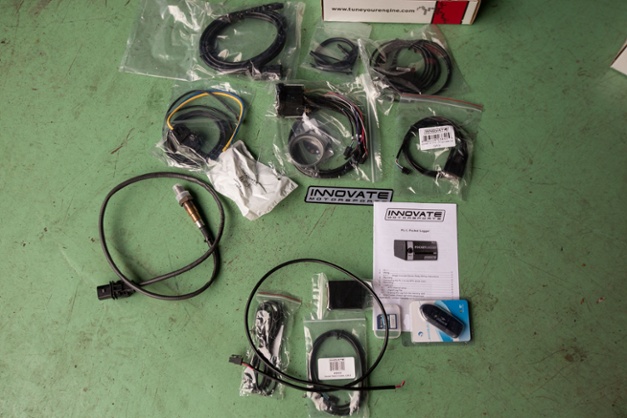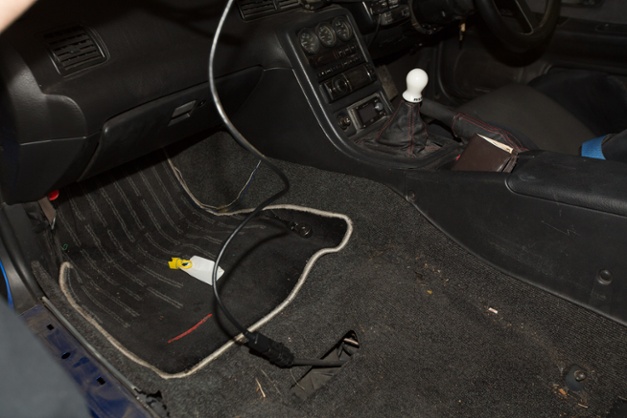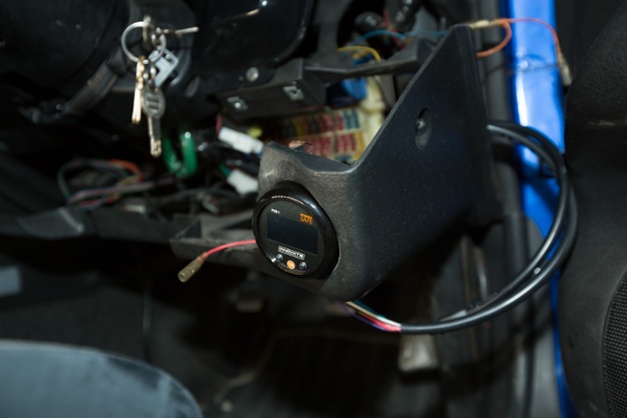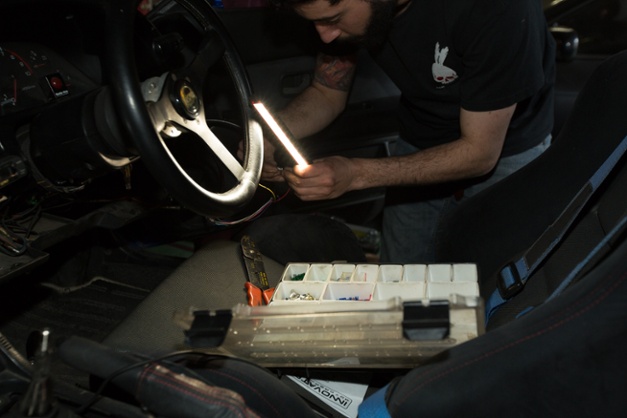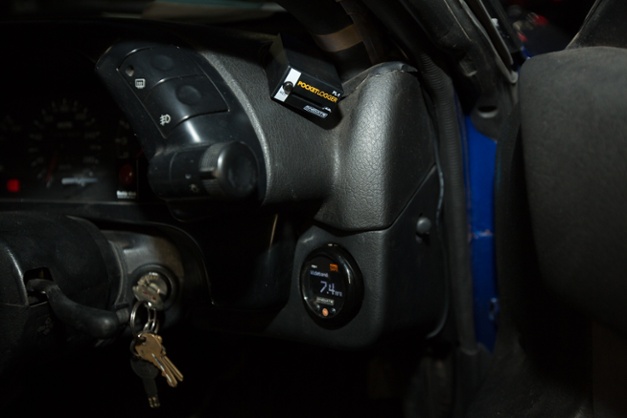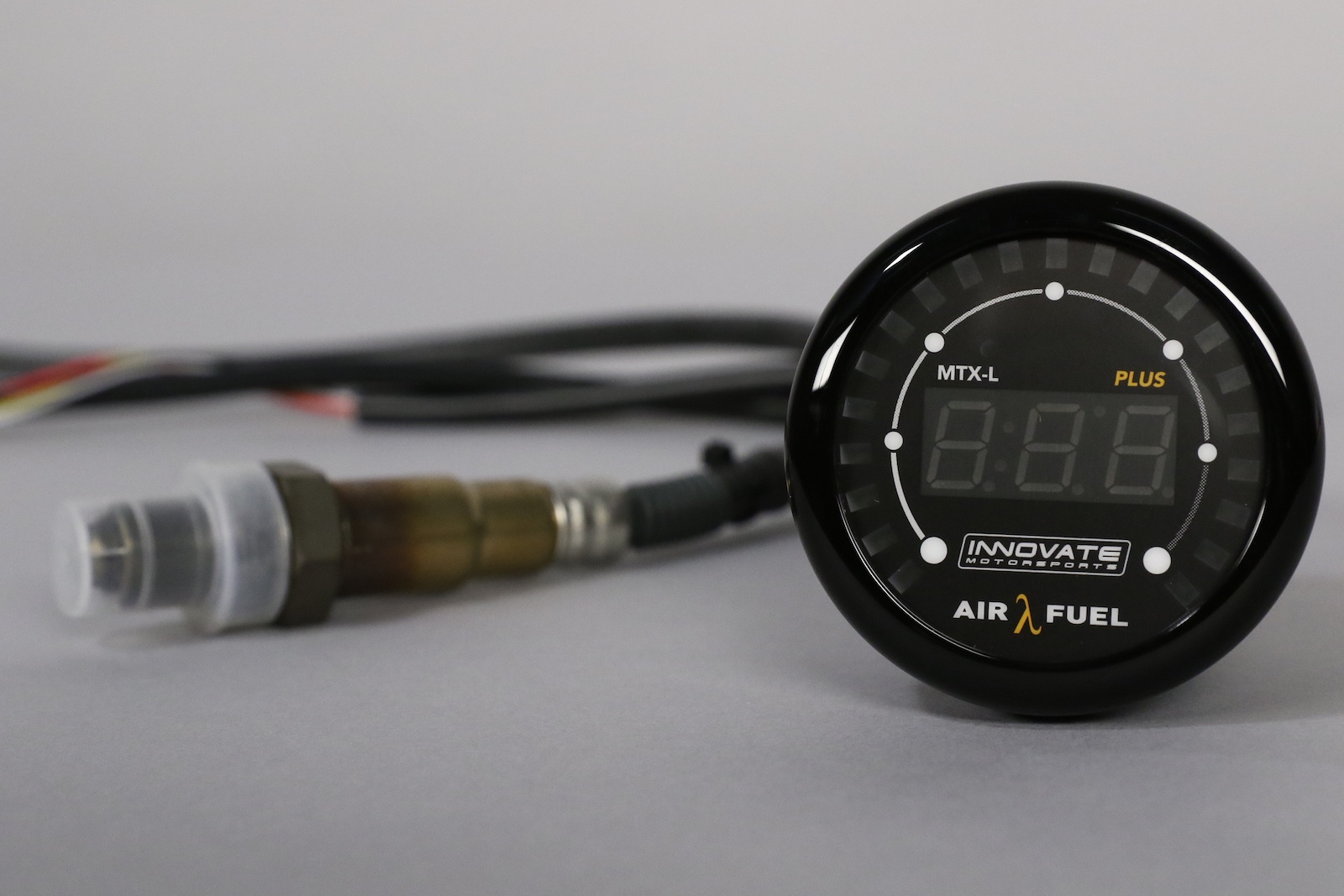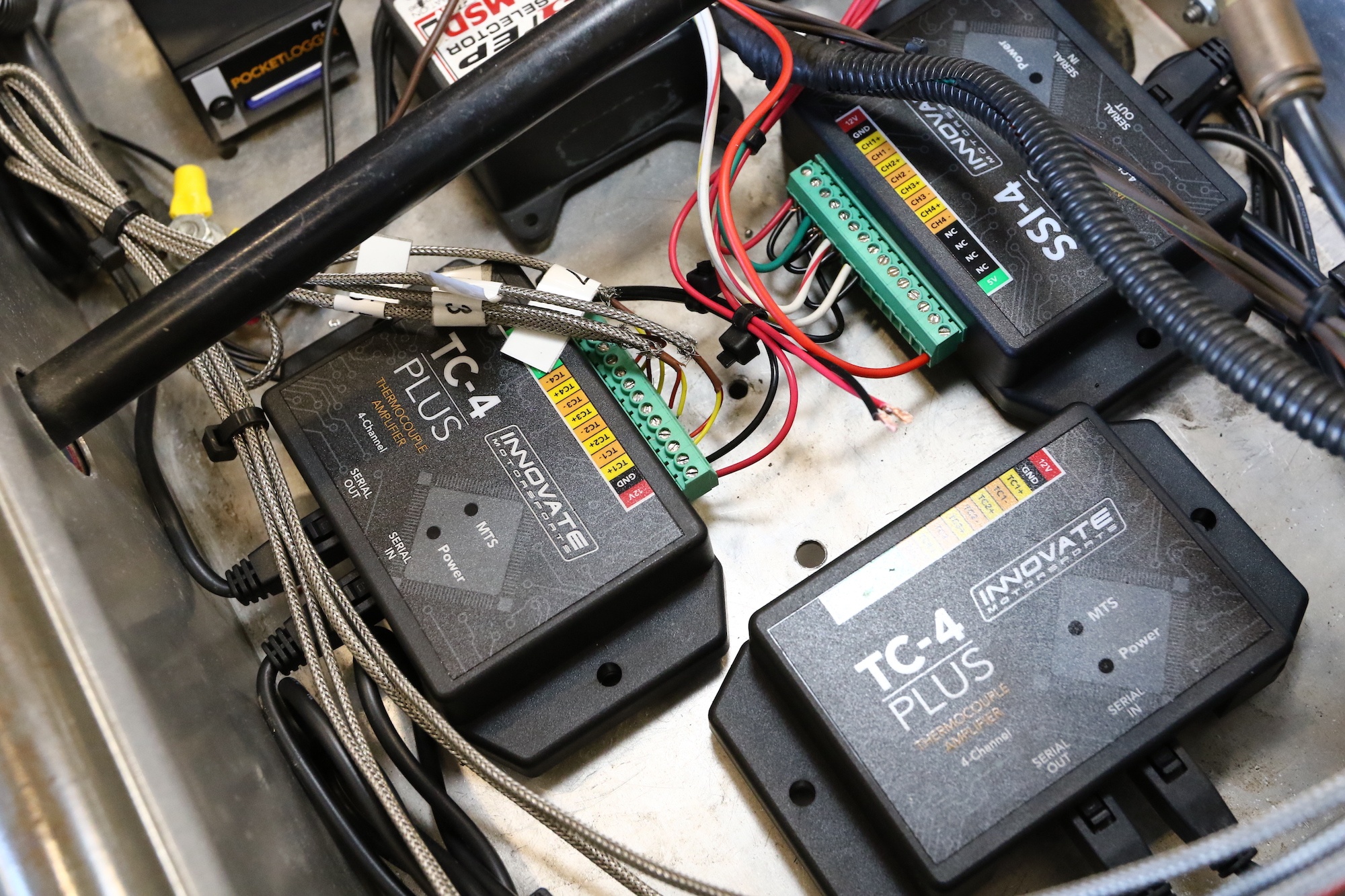We install a PSB-1 PowerSafe Boost & Air/Fuel Ratio gauge, along with the PL-1 Pocket Logger, on a heavily modified street R32 GT-R.
The PowerSafe gauges combine our patented DirectDigital O2 sensor control technology with application specific sensors, an OLED display, and a smart safety override circuit for high performance vehicles. The PowerSafe technology can disable factory or aftermarket boost control solenoids forcing the system to run only at wastegate spring pressure.
Background:
The R32 Nissan Skyline GT-R is an icon both in motorsport and on the street, so it is no wonder that these cars are now highly desirable in the States given their recent status as a legal import. Japan based U.S. Military personnel especially have been snapping up these cars the past few years, due to the fact that Uncle Sam will pay for them to be shipped back home. Such was the case with this particular 1989 GT-R, which was originally bought to be transferred across the Pacific when its owner Leonard was finished with his Army contract.
Leonard bought the car in 2013 and quickly decided to begin work on it, sending it off to the world-famous GT-R tuning shop Top Secret for an engine swap. A plethora of Nismo parts were fitted to a later model R33 GT-R engine block, not just a standard run of the mill block, but an N1 block. The N1 was Nissan’s high performance solution to the standard RB26’s shortcomings at endurance racing and featured an updated oil pump, oil baffles, water pump, coolant passages, and a rebalanced crank. Mated to the N1 block is a head from an R34 GT-R, crammed with most of the HKS catalog, including the entire valvetrain, cam gears, camshafts, and timing belt. A pair of HKS 2530-Kai turbos complete the deal to the tune of 540 whp and 465 lb-ft of torque.
Monitoring the engine comes in the form of a mash-up of old JDM gauges, from Greddy, HKS, and Nismo which adorn the dashboard and surrounding area. Some no longer function due to their extreme age, so to cut down on clutter, Leonard plans to eventually replace the Nismo mechanical 3-pack in the center console with Innovates’ Dual Function MTX Digital Oil Pressure/Temperature and MTX Dual Function Digital Water Temperature/Battery Voltage gauges. Today’s agenda has him getting rid of the HKS EVC 5 Boost controller and the non-functioning Nismo voltage meter in lieu of the Innovate PSB-1 PowerSafe Boost & Air/Fuel Ratio Gauge with a PL-1 Pocket Logger to conveniently keep track of AFR and boost data for later analysis.
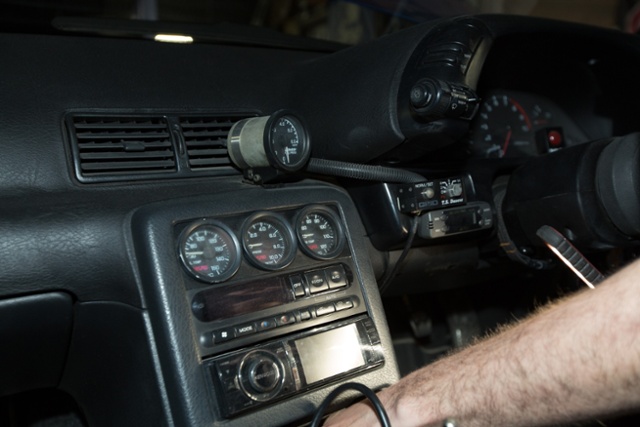
Installation:
Although a shop isn’t needed to install the PSB-1, Leonard had some issues getting his car running this fine Sunday, and so we ended up at one anyway. It turns out that the GT-R’s starter decided to give up the ghost, so the helpful crew over at Three-H obliged to loan us their space and tools to install the gauge while they worked on installing a new starter.
With most of the day gone already, we decided to get right to opening the box and laying out the parts. The PSB-1 kit comes with the digital gauge, a swappable white face plate and silver bezel, the Bosch LSU 4.9 O2 sensor and a weld on bung, an 8-foot sensor cable, a 4 BAR MAP sensor and relay, and lastly a serial cable for tuning. The PL-1 Pocket Logger comes with a 2GB SD card, a USB card reader, power cables, and two different data cables depending on the age of the gauge being logged (older gauges use a 2.5mm audio plug rather than the newer 4pin of the MTX series).
The first order of business is to figure out how you will run the cable from the O2 sensor into the cabin. Leonard removed the passenger seat and pulled up the carpet to reveal a hole that he was using for some other wiring. The hole needed to be widened to slip the sensor through, so we broke out the grinder and sander to complete the job. A rubber grommet was sourced from the Three-H parts bucket and pushed over the sensor cable to seal off the cabin from the road.<br />
Next up was to connect the 8ft sensor extension cable and route the wire through the center console to the driver’s side air-conditioning vent, where the Nismo volt meter was now housed. There are more aesthetically pleasing ways to do this step, but we were in a hurry to get everything finished by nightfall.
Popping out the Nismo gauge, it was time to test fit the PSB-1. It sat almost perfectly, but just to be sure Leonard was able to reuse a rubber spacer to help keep the PSB-1 snug in it’s new home. A few bits of double sided tape made sure that everything would stay put behind the dash.
Wiring was taken care of and the PL-1 installation was as simple as supplying power/ground and connecting it to the PSB-1 via the provided 4 pin to 4 pin cable. Now that everything was powered up and confirmed working, it was time to calibrate the sensor.
The PSB-1 gauge needs a baseline reading to compare the data from inside the exhaust to, so first we needed to run the gauge with the O2 sensor sitting in “free air”, meaning outside of the exhaust system. After that was done, the O2 sensor was screwed into the bung on the downpipe, and secured with some handy zipties. A hefty dab of silicone sealed the rubber grommet under the passenger seat. We cranked up the newly installed starter and after making sure everything was reading correctly from the sensor to the gauge, we left the shop to head down to a slightly more scenic area to take some photos.
Talking to Leonard on the way over to the river, we asked him about his reasons for building the car. “The main focus was for it to be a street car that can put down decent times at the track while still having a full interior. Prior to the R32 I had two Nissan 240SXs in the States that I had modified, so the GT-R was a natural progression.”
The modifications to the car are fairly extensive. As mentioned at the beginning Top Secret worked magic with the powerplant and in order to properly cool the beast, a Greddy 12-row Oil Cooler has been fitted along with a GREX filter relocation kit. Piping from the exhaust side of the engine to the turbos are done by Tomei, following up with Apexi parts all the way through to the back of the car. Wanting to make sure all this power was planted to the ground properly, a set of Aragosta Track coilovers were appointed to handle the job, the same brand Akira Nakai trusts with all his RWB Porsches. R35 GT-R calipers and 380mm rotors apply stopping power to a body that weighs 750 pounds less than the car they were intended for.
The list literally goes on and on, but none of these mods mean anything if the car is never driven. No need to worry though, as Leonard pretty much daily drives the thing, with frequent weekend trips around Tokyo’s most famous track, the C1 Highway loop, as well as jaunts up to the mountain roads that wind through Hakone.
It is on these spirited driving trips that Leonard needs to monitor the GT-R’s engine diagnostics most, and it’s with Innovate Motorsports gauges that he has decided to rely on for this duty. The PSB-1 PowerSafe Boost & Air/Fuel Ratio gauge will help keep the car boosting safely and in case of any mishaps, the PL-1 Pocket Logger should pinpoint when exactly problems arose.
From the land of the rising sun, Sayonara!





